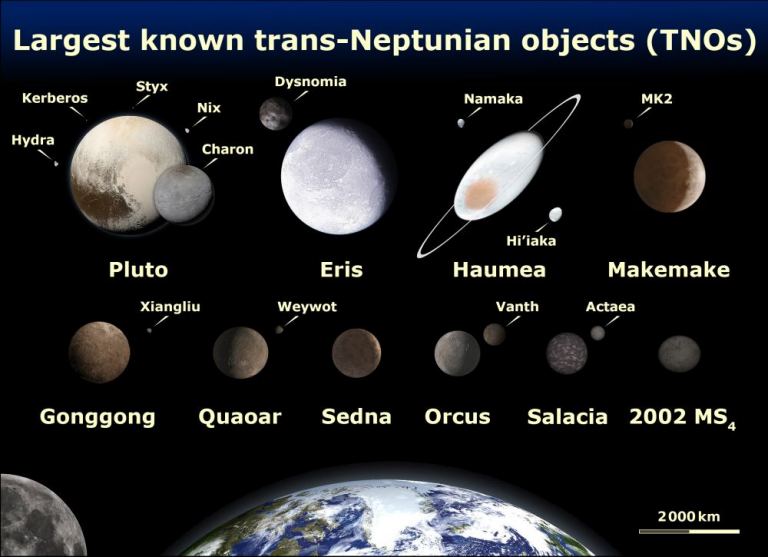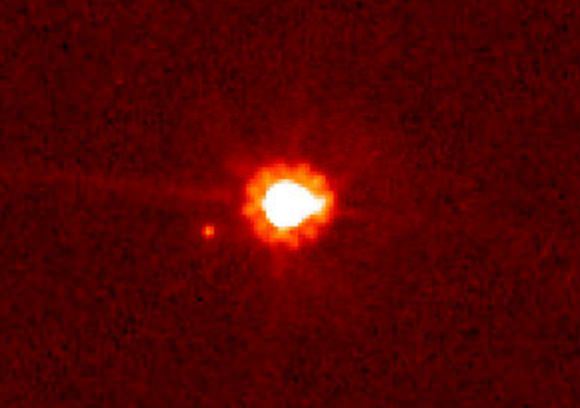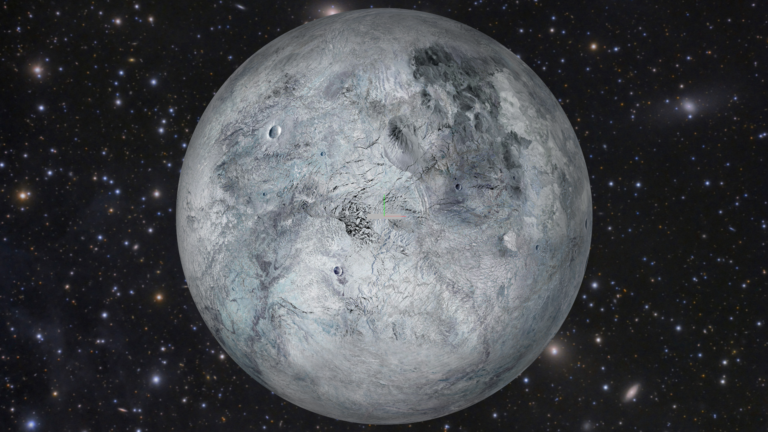Eris May Have a More Liquid Composition Than Pluto
In 2005, astronomer Mike Brown, along with colleagues Chad Trujillo and David Rabinowitz, unveiled the discovery of a hitherto unknown planetoid in the Kuiper Belt, situated beyond Neptune’s orbit. They named this celestial object Eris, drawing inspiration from the Greek personification of strife and discord. The International Astronomical Union (IAU) officially designated this discovery a year later. Eris, along with Haumea and Makemake, observed in 2004 and 2005 respectively, played a pivotal role in instigating the ongoing “Great Planet Debate.” Simultaneously, astronomers have persisted in studying the Trans-Neptunian region to unravel more about these distant objects.
Although subsequent observations have provided astronomers with a better grasp of Eris’s size and mass, numerous questions linger regarding the structural aspects of this “dwarf planet” and how it contrasts with Pluto. In a recent study, Mike Brown and Professor Francis Nimmo from the University of California, Santa Cruz, presented a series of models based on new mass estimates for Eris’s moon, Dysnomia. Their findings suggest that Eris likely exhibits differentiation, characterized by a convecting icy shell enveloping a rocky core, distinguishing it from Pluto’s conductive shell.
Their paper, titled “The internal structure of Eris inferred from its spin and orbit evolution,” was recently published in the journal Science Advances. The research originated during Nimmo’s visit to Professor Brown at Caltech, where they realized that previously unpublished data could shed light on Eris’s properties. Currently, it is established that Eris shares similar dimensions and mass with Pluto and follows a highly eccentric orbit around the Sun, ranging from 38.271 astronomical units (AU) at perihelion to 97.457 AU at aphelion. This orbit is nearly twice as eccentric as Pluto’s and approximately 50% more distant from the Sun.

Over the span of several months, Brown and Nimmo collaborated on models for Eris, incorporating two pivotal pieces of information. The initial aspect involved Eris’s sole known satellite, Dysnomia, and the consistent alignment of the two bodies, perpetually facing each other. Nimmo explained, “That happens because the big planet gets spun down by the tides that the little moon raises on it. The bigger the moon is, the faster the planet spins down. And so as soon as you know that, then you can actually start to do real calculations.”
The spin and orbital characteristics of planets and their moons offer astronomers insights into certain properties, including their internal structures. However, until recently, estimates for Dysnomia’s size, mass, and density were unavailable. Fortunately, Brown and colleague Bryan J. Butler, a researcher at the National Radio Astronomy Observatory (NRAO), conducted observations of Dysnomia and Eris, along with Orcus and its satellite Vanth, using the Atacama Large Millimeter-submillimeter Array (ALMA). Published in The Planetary Science Journal, their findings indicated that Dysnomia has a diameter of approximately 615 km (382 mi), and Dysnomia and Eris have a mass ratio of 0.0085.
The second crucial piece of information derived from this upper mass limit pertained to Eris’s internal structure. The unexpected result from Brown and Nimmo’s model revealed Eris to be remarkably dissipative, a concept in thermodynamics describing a system operating out of equilibrium. This led them to conclude that Eris possesses a rocky core enveloped by a layer of ice, with a crust likely undergoing convective processes. Nimmo explained, “The rock contains radioactive elements, and those produce heat. And then that heat has to get out somehow. So as the heat escapes, it drives this slow churning in the ice.” This distinguishes Eris from Pluto, which exhibits a conducting shell, as observed by the New Horizon mission.
Anticipating more precise measurements of Dysnomia’s mass and additional data on Eris’s shape in the future, Brown and Nimmo emphasize the challenge posed by Eris’s considerable distance. Eris appears as a single pixel of light, while Dysnomia is a faint speck adjacent to it. Therefore, astronomers must track Eris as it transits in front of background stars to reconstruct its shape, employing a method akin to the Transit Method used in the detection of exoplanets to constrain their sizes.

As Nimmo succinctly put it, these measurements will assist him and Brown in refining the models they have developed:
“If Dysnomia’s size is smaller than the estimated diameter, it implies that Eris possesses even greater deformability. We emphasize that Eris is likely to have a relatively smooth surface because any surface irregularities would be smoothed out by the flow of ice. Therefore, obtaining measurements of Eris’s shape is crucial. If its shape proves to be highly irregular, it would not align with our current model.”
He added, “The phenomenon involves the star momentarily disappearing and then reappearing, providing information about the width of Eris at that specific point. By repeating this process with multiple stars, one can reconstruct the overall shape. I am optimistic that astronomers might be conducting such observations, though I am uncertain of their current activities.”
Further Reading: UCSC
Do not forget to share your opinion with us to provide you with the best posts !




0 Comments